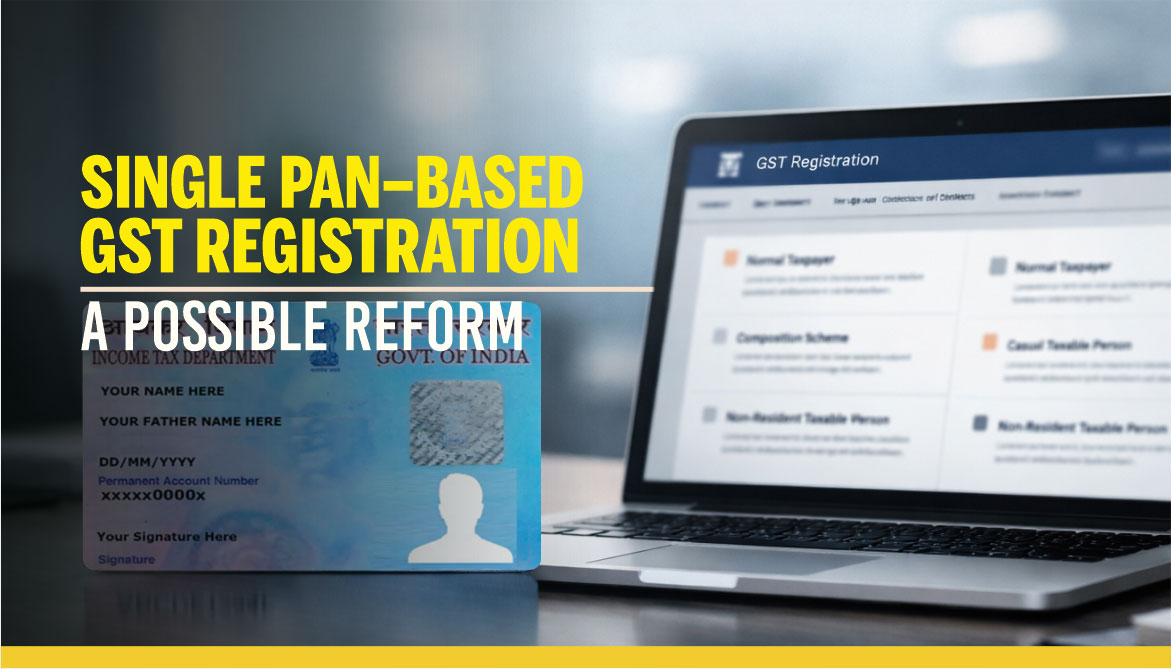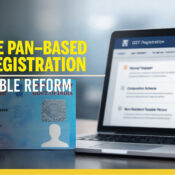Post Single Template #2
- Home
- Post Single Template #2

Recent Industry News
GST ITC Reversal & RCM Ledgers – Key Compliance Updates
Union Budget May Ease GST Compliance Burden for MSMEs
As India completes eight years of the Goods and Services Tax (GST), the journey has been one of steady evolution rather than static design. Introduced in 2017 as a transformative reform to unify the indirect tax landscape, GST has matured through multiple phases—stabilisation, digitalisation, and now structural refinement. The conversation has gradually shifted from whether GST works to how GST can work better.
In recent years, this transition has been visible through what is commonly referred to as GST 2.0—a phase marked by rate rationalisation, technology-led compliance, risk-based scrutiny, e-invoicing, and process simplification. As GST enters the next stage of maturity, one reform increasingly discussed across industry and professional circles is the need for a single PAN–based GST registration system.
GST’s Evolution: From Structure to Systems
In its early years, GST was necessarily focused on stabilising the tax structure—aligning rates, resolving classification disputes, and harmonising Centre–State coordination. As the ecosystem matured, attention shifted to systems and processes: automation of returns, credit matching, introduction of e-way bills and e-invoicing, and increased use of data analytics for compliance monitoring.
Recent reforms in GST registration itself reflect this shift. Fast-track registration for low-risk applicants, Aadhaar-based authentication, and reduced manual intervention indicate a clear policy direction—trust genuine taxpayers while using technology to manage risk. While onboarding has become faster, the registration architecture itself remains essentially unchanged.
The Case for Rethinking GST Registration
Under the current framework, GST registration is state-specific, requiring separate GSTINs for each State or Union Territory in which a business is liable to register. At the same time, PAN already functions as the core identifier for businesses across the GST ecosystem—linking returns, payments, e-invoicing, e-way bills, and analytics.
This duality—PAN as the base identity, but GSTINs fragmented across states—creates operational friction, particularly for businesses with a multi-state presence.
In practice, this results in:
-
repeated onboarding and verification cycles across states,
-
fragmented compliance controls and reporting mechanisms,
-
duplication of effort in reconciliations and audits,
-
higher dependence on decentralised teams and advisors.
For MSMEs expanding beyond a single state, and for digital-first or distribution-led businesses, registration complexity often becomes a hidden but significant cost of compliance—unrelated to tax liability, but driven purely by process.
Rising Demand for a PAN–Based Registration Model
Against this backdrop, there is a growing demand from industry, professionals, and policy commentators to rethink the GST registration framework and explore a single PAN–based registration system.
Such a system would not imply diluting GST’s federal structure. Instead, it would represent a re-engineering of the registration backbone, while retaining state-wise reporting, place-of-supply rules, and revenue settlement mechanisms. The core idea is simple: one principal registration per PAN, supported by clearly identified places of business, instead of multiple independent registrations for the same legal entity.
Importantly, this demand is not speculative. It aligns closely with the broader GST reform trajectory—simplify procedures, reduce duplication, and rely on data rather than paperwork for enforcement.
What a Single PAN–Based Registration Could Achieve
If carefully designed, such a framework could deliver meaningful gains across multiple fronts.
Lower compliance burden for genuine taxpayers
A unified registration backbone would eliminate repetitive onboarding processes and allow businesses to centralise documentation, internal controls, and compliance oversight. This is particularly relevant for growing enterprises that are currently facing a sharp increase in compliance requirements as they expand geographically.
Improved compliance quality through better system design
Simplification does not weaken compliance; it often strengthens it. A PAN-led architecture enables holistic data analytics—linking registration details with return filings, e-invoicing, e-way bills, and banking data—allowing authorities to focus on risk-based detection rather than procedural scrutiny.
Easier scaling for MSMEs and new-age businesses
One of the biggest deterrents to formal expansion is the compliance jump triggered by entering new states. A simplified registration framework would reduce this “tax complexity penalty” on growth, encouraging formalisation and scale.
Design Challenges That Must Be Addressed
That said, advocating for a single PAN–based registration does not mean ignoring its complexities.
Any workable model must carefully address:
-
Jurisdiction and assessments, ensuring clarity on audit and enforcement authority;
-
State revenue attribution and settlement, preserving the fiscal federalism embedded in GST;
-
Operational granularity, particularly for businesses with multiple warehouses, factories, and branch operations;
-
Transition planning, allowing existing taxpayers to migrate in a phased and non-disruptive manner.
A possible solution lies in a hybrid architecture—a single PAN-based principal registration, supported by multiple place-of-business identifiers, rather than a blunt replacement of all existing GSTINs.
Conclusion: A Reform Worth Advancing
As GST enters its ninth year, the focus must shift from incremental fixes to structural simplification. A single PAN–based GST registration system represents such a reform—one that aligns with the maturity of the tax, the sophistication of its technology backbone, and the realities of modern business operations.
There is a clear and rising demand for this change. If considered in an upcoming budget cycle and designed thoughtfully, it could significantly reduce compliance friction without compromising revenue or control. In the GST 2.0 era, simplification backed by data is no longer just desirable—it is essential.



